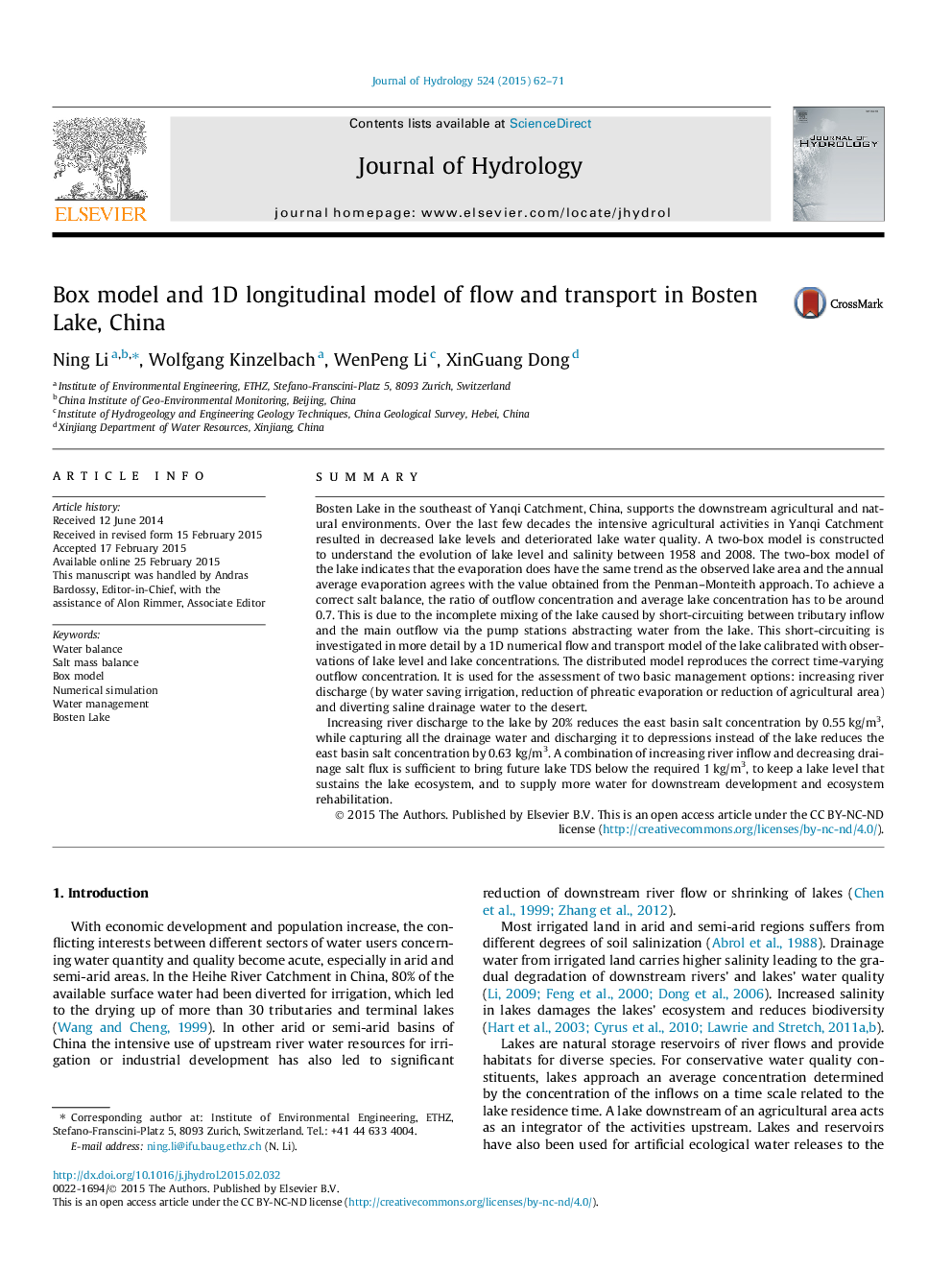| Article ID | Journal | Published Year | Pages | File Type |
|---|---|---|---|---|
| 6411394 | Journal of Hydrology | 2015 | 10 Pages |
â¢The box model and distributed model indicate the incomplete mixing in Bosten Lake.â¢The east basin mixing parameter γ has to be around 0.7.â¢Increased river discharge to the lake will reduce the lake TDS concentration.â¢Reduced drainage discharge to the lake will improve the lake quality.â¢Combining the two basic measures is a reasonable strategy in Bosten Lake.
SummaryBosten Lake in the southeast of Yanqi Catchment, China, supports the downstream agricultural and natural environments. Over the last few decades the intensive agricultural activities in Yanqi Catchment resulted in decreased lake levels and deteriorated lake water quality. A two-box model is constructed to understand the evolution of lake level and salinity between 1958 and 2008. The two-box model of the lake indicates that the evaporation does have the same trend as the observed lake area and the annual average evaporation agrees with the value obtained from the Penman-Monteith approach. To achieve a correct salt balance, the ratio of outflow concentration and average lake concentration has to be around 0.7. This is due to the incomplete mixing of the lake caused by short-circuiting between tributary inflow and the main outflow via the pump stations abstracting water from the lake. This short-circuiting is investigated in more detail by a 1D numerical flow and transport model of the lake calibrated with observations of lake level and lake concentrations. The distributed model reproduces the correct time-varying outflow concentration. It is used for the assessment of two basic management options: increasing river discharge (by water saving irrigation, reduction of phreatic evaporation or reduction of agricultural area) and diverting saline drainage water to the desert.Increasing river discharge to the lake by 20% reduces the east basin salt concentration by 0.55Â kg/m3, while capturing all the drainage water and discharging it to depressions instead of the lake reduces the east basin salt concentration by 0.63Â kg/m3. A combination of increasing river inflow and decreasing drainage salt flux is sufficient to bring future lake TDS below the required 1Â kg/m3, to keep a lake level that sustains the lake ecosystem, and to supply more water for downstream development and ecosystem rehabilitation.
